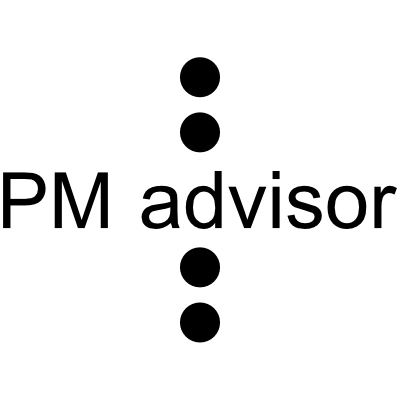
PM Methodologies
Your 1st step to success.
Your chosen project management methodology is step 1 to your project success. Get the process or methodology for project management right and you’ll be well on your way. Next, in step 2, you will need to find the right tools to help you follow the methodology. Finally in step 3, you’ll need to make sure that you (or your project managers) have the skills and experiences necessary to follow the process and use the tools for maximum effect.
Here we list some relevant Project Management resources on the web which we have found useful in the field of methodologies, processes & supporting frameworks.
Agile: Agile Cheat Sheet, Agile Project Management
Critical Chain Project Management (CCPM):
Goldratt, Youngman (also take a look at our post below on CCPM)
Traditional:
APM, PMI, PRINCE2™
SCRUM:
Scrum Alliance
If you’d like to suggest additions please do drop us a line.
Critical Chain Project Management.
PM Advisor and our consultants at ProjExc are constantly looking for ways to help Project Managers to be more successful, in what we call the Post-PRINCE era of project management.
One “new” methodology that has been growing in popularity for a few years now, albeit mostly under the radar, is Critical Chain Project Management, or CCPM. CCPM is based on the ideas presented by Eliyahu Goldratt in his books The Goal and Theory of Constraints.
CCPM promises the successful delivery of projects significantly earlier, with more confidence and using less resources. The cost for this is a huge leap of faith, and the need to get every department involved in a project (from executives to manufacturing and sales) completely engaged and committed to the concept from the outset and to keep that faith to the end! That said, a growing number of big organisations are adopting CCPM having recognised a significant opportunity to compete. For example, only yesterday, we read in Business Insider that the 3 books which Amazon CEO Jeff Bezos asks his senior managers to read includes Goldratt’s The Goal.
We have read the books, done the research, and seen, heard and read about a number of success stories, as well as one or two horror stories of implementations gone wrong. It was fascinating therefore to get an opportunity at a recent APM event (The Real Reason that Projects Fail & How to Fix it) to hear from Gary Palmer of Critical Point Consulting, a CCPM consultancy from Kent, explaining the differences between traditional PM methods and CCPM. Clearly a convert to the “teachings” of Goldratt et al, Gary passionately believes that the only way to make projects successful is to adopt the principles and methods of CCPM.
Interestingly, and regardless of views on the suitability of CCPM, we wholeheartedly agree with Critical Point that project objective failure rates of 66%+ are unacceptable, leading to unnecessary disappointment, frustration, poor productivity, late market entry and impact on the bottom line. Liberal application of common sense together with a pragmatic implementation of waterfall, agile or a combination can make a huge difference to success.
What is CCPM?
Palmer sees this as a set of interlinked techniques & tools that work individually and collaboratively to significantly improve the processes and operation of scheduling & execution in projects, portfolios and programmes alike. The key to CCPM is scoping and scheduling. As the project proceeds the main role of the project manager is to ensure that the focus of the whole organisation is to ensure that potential critical/key resource constraints are always avoided at all costs.
The main observed problems in traditional PM:
Deadline driven scheduling feeds the impact of Parkinson’s Law meaning that early finishes never materialise,
Task level contingencies tend to have a product rather than summing effect, leading to resources adopting student syndrome and having no incentive to start early.
Critical Path focus completely ignores resources when planning resulting in frequent changes to the plans.
Multi tasking slows everything down, reduces quality and destroys productivity.
Poor measures & control tend to only focus on %age complete reported to expectation, and spend to date and subjective retrospective opinions of progress. However does the PM really have objective data to understand is the project on target?
CCPM solves these problems, in turn, by:
Creating a dependency “relay race” with no dates in the schedule.
Placing a total project “buffer” to be shared by all resources at end of the schedule, before an agreed project “commit” date, thus aggregating uncertainties.
Focus on the Critical Chain including resources. This forms resource dependencies rather than task dependency.
Single Tasking. Only one task is worked on in the chain, with no interruptions and dedicated resource until complete.
Good measures & visible control. Daily reporting of whether a task is complete, or if not how much task time remains. This is reflected in a Fever Chart.
Two other major benefits.
CCPM removes the need for schedule changes greatly simplifying life for the project manager, and
Each individual problem encountered no longer perpetuates others.
Tools
There is a small but growing pool of critical chain project management software meeting the needs of the new market. Some are standalone, some are add-ons to traditional tools like MS Project and additionally some of the all-in-one tools are integrating CCPM. These include: Concerto, Exepron, Novaces, ProChain, and Sciforma. The key management tool which is easily adopted and communicated is the Fever Chart. This powerfully visualises how much of the critical chain completed, and how much of the buffer has been consumed, and the PM would generally share this with the whole team on a daily basis.
Other Useful Links and Related Resources:
Goldratt Books on Amazon.
Kelvin Youngman’s A Guide to Implementing the Theory of Constraints is a super guide with many useful resources.
The Billion Dollar Solution, Robert Newbold’s secrets of ProChain Project Management.


